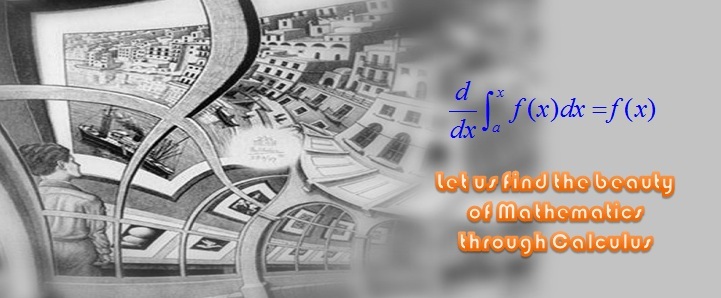Syllabus for ADVANCED MATHEMATICS D
Course Code:122008 Credits: 4 (one semesters)
Total Hours:68
Instructor: Examiner:
1. Characteristics and Objective
Advanced Mathematics D (Calculus) is a compulsory course for the students in the majors of non-science and technology.
The course is designed to let the students learn the basic concepts, theories and computational skills in calculus which include:
1) functions; 2) limits; 3) the differential calculus of single variable functions; 4) the integral calculus of single variable functions.
The course serves the need of training the specialized personnel in the field of liberal arts with the necessary modern scientific and technological knowledge.
2. Basic Requirement
The students are required to obtain a mastery of the basic concepts, theories and computational skills on the above-mentioned topics of calculus, and to develop the ability in logical thinking, mental visualization and computational competence through the study of the course.
3. Basic Content
1) Functions
- (1) The concept of function, even and odd functions, monotoncity, periodicity and boundness of functions
- (2) The concept of composite functions and inverse functions
- (3) The properties and graphs of the basic elementary functions
- (4) Mathematical modeling for simple practical problems
2) Limits
- (1) The concept of limits, the rules for the limits of sums, products and quotients, and for variable substitutions
- (2) The squeeze rule, the principle for the existence of limit of a monotone and bounded sequence, the two important limits ( , ), the application of the above rules and important limits in evaluating limits
- (3) The infinitesimals (the functions with limit 0) and infinities (the functions that increase or decrease without bound), the order of infinitesimals, the method of substituting the equivalent infinitesimals in evaluating limits
- (4) The concept of continuity of a function at a point and on an interval, the points of discontinuity and their classification
- (5) The continuity of elementary functions and the properties of continuous functions on finite closed intervals (the intermediate-value theorem and max-min value theorem)
3) Differential Calculus of Functions of a Single Variable
- (1) The concept of derivative and differential, the geometric interpretation of derivative, the relationship between differentiability and continuity
- (2) Basic rules for the derivatives of the sum, product and quotient of functions, the chain rule, the derivative formulas of the basic elementary functions and the computation of the derivatives of the elementary functions
- (3) The concept of higher derivatives
- (4) Implicit differentiation and the derivatives of the functions defined by parametric equations, the derivative of inverse functions
- (5) The Mean Value Theorems (Rolle, Lagrange, Cauchy and Taylor Theorems)
- (6) The indeterminate forms and Rule
- (7) The concept of relative (local) and absolute (global) extrema, determining the monotonicity and finding the maxima and minima of functions by means of derivatives, solving some practical optimization problems
- (8) Determining the concavity of and the inflection points on the graphs of functions and sketching the graphs of functions by means of derivatives (including the horizontal and vertical asymptotes)
- (9) The concept of curvature and radius of curvature, the computation of curvature and radius of curvature
- (10) The bisection method and Newton’s method for Numerical approximation to the roots of equations
4) Integral Calculus of Functions of a Single Variable
- (1) The concept and properties of the primitive functions (antiderivatives) and indefinite integrals, the basic formulas of indefinite integrals, indefinite integration by substitution and by parts
- (2) The concept and properties of definite integrals
- (3) The definite integral with variable upper limit as a function of its upper limit, and the derivative of this function with respect to the upper limit, the Fundamental Theorem of Calculus (Newton-Leibniz Formula)
- (4) Definite integration by substitution and by parts
- (5) The concept of improper integrals
- (6) Numerical integration (Rectangle Rule, Trapezoidal Rule and Parabolic Rule)
- (7) The method of expressing and computing some geometric and physical quantities by using definite integrals (e.g. area, volume, arc length, water pressure and work)
4. Experiment or Computer Operation
5. Preparatory Course Requirement
The mathematical courses provided in the senior middle schools.
6. Hours Distribution
|
NO. |
Content |
Theoretic Teaching |
Experiment | Exercise |
Computer Operation |
Sub- total |
| 1 | Functions | 14 | 2 | 16 | ||
| 2 | Limits | 16 | 2 | 18 | ||
| 3 | Differential calculus of single variable | 16 | 2 | 18 | ||
| 4 | Integral calculus of single variable | 14 | 2 | 16 | ||
| total | 60 | 8 | 68 |
7.Textbooks and Main Reference Books
Text Book:
《Calculus》 (English Edition) by H. Anton, I. Blvens & S. Davis,
Higher Education Press
Reference:
《An Elementary Course of Higher Mathematics》(third edition),
by the Department of Mathematics of Tongji University, published by the Higher Education Press

